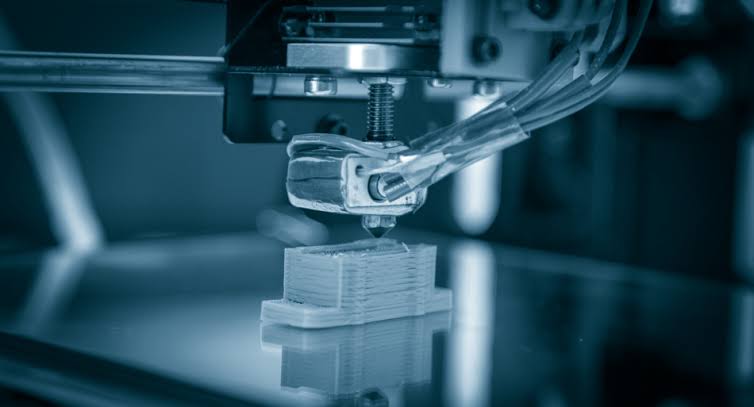In the world of professional 3D printing, there is a wide variety of materials to choose from. Long gone are the days when you were limited to choosing only from cheap plastics. In the wake of 3D printing technology, material innovations like nylon, stainless steel, and carbon fiber have become possible. Due to the fact that almost any geometry can be easily fabricated regardless of material, this method frequently outperforms traditional fabrication.
3D printing is now available in a greater variety of materials than ever before, but choosing which material to use can be challenging. For prototypes, tools, and finished products, materials play a critical role. The most common materials for 3D printing are plastic, metal, and composites. The use of metals and composites in 3D printing has also become increasingly popular as the process of 3D printing is automated as well as high-performance materials. To learn more, you can visit cac.works.
Using plastic for 3D printing
The most developed 3D printing technology is based on plastic, as it offers the broadest range of materials. The materials used by professionals for 3D printing include ABS, polypropylene, nylon, and thermoplastics such as polyetherimide. Compared to traditional fabrication methods, 3D plastic printing still has shorter lead times, even when cured and post-processed.
Plastics made from acrylonitrile butadiene styrene (ABS) are both beautiful and mechanically strong. A number of everyday items, such as toys, kitchen appliances, phones, etc., contain this element.
Chemical resistance, the ability to form living hinges, and fire hazard are among the properties of polypropylene (PP).
Nylon: Although they are rigid, strong, and durable, or even resistant to strong bases or acids, they can also be expensive. Electronics and mechanical components are typically made from this material.
Polyetherimide (PEI): A thermoplastic that can withstand high temperatures while being 3D printed. Materials made from this material can make heat-resistant components and injection molds, but they are costly.
Read Also: Aluminum PCB: What You Need To Know
Metallic 3D printing
A whirlwind of excitement has swept metal 3D printing lately. Since the 3D printing revolution began, several manufacturers have emerged that offer technologies such as direct metal laser sintering (DMLS) and selective laser melting (SLM). Engineers, who require materials with superior strength and durability, often turn to three-dimensional printing for the easiest way to produce these materials. A metal printed by a 3D printer is subject to some post-processing, but this is less labor intensive than traditional manufacturing methods.
The use of stainless steel extends across many industries, including architecture and medicine. Surgical instruments, kitchen tools, and car parts are made of this durable material. 3D printers can be used to make these products efficiently and easily. The use of 3D printing reduces manual labor and increases efficiency and automation.
Metals like aluminum are popular due to their light weight and malleability. MacBooks, airplanes, and food packaging are among the items made of aluminum. Traditional machining has been replaced by 3D printing for many aluminum applications.
Titanium’s strength-to-weight ratio is one of the highest of any metal, which makes it an expensive metal. In addition to being tough, durable, and biocompatible, it resists fatigue as well. It is however the cost of titanium, rather than its technical properties, that has made it ideal for specialized products such as high-end automobile parts or surgical implants.
| Composite materials |
In recent years, 3D composite printing has made creating composite components easier than ever before. The best of both worlds is achieved by combining reinforcements (such as carbon fiber) and matrices (such as polymers). Compared with metals, composites have superior mechanical properties. In the past, engineers who wanted the advantages of composites had to undergo lengthy fabrication processes. Instead of taking weeks to produce, composite 3D-printed parts are ready in just a few hours. A voxel-by-voxel analysis is used by engineers with voxel-by-voxel 3D printing to optimize the materials used.
Any metal cannot compare to the strength-to-weight ratio of carbon fiber. With this material, products can be made stronger, stiffer, and lighter. The use of carbon fiber enhances the efficiency and performance of aircraft, cars, and bicycles.
Composite materials such as glass are efficient and cost-effective. Wind turbine blades, circuit boards, and hulls can all be manufactured from the material due to its high stiffness-to-weight ratio. Multiple industries use glass because it is cost-effective and versatile.
The 3Ds printings industry is advancing every year. Globally, consumers are turning away from 3Ds printings and moving toward uses such as prototyping, toys, and tools, which are used for industrial and professional purposes. A number of manufacturers have stopped manufacturing and have turned to 3Ds printings instead. Using 3Ds printings materials, engineers can print prototypes, tools, and end-use parts quickly and efficiently.



